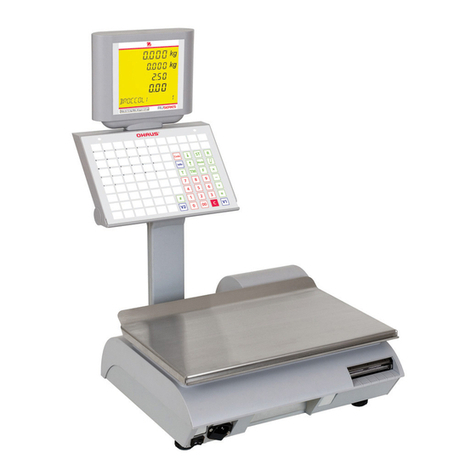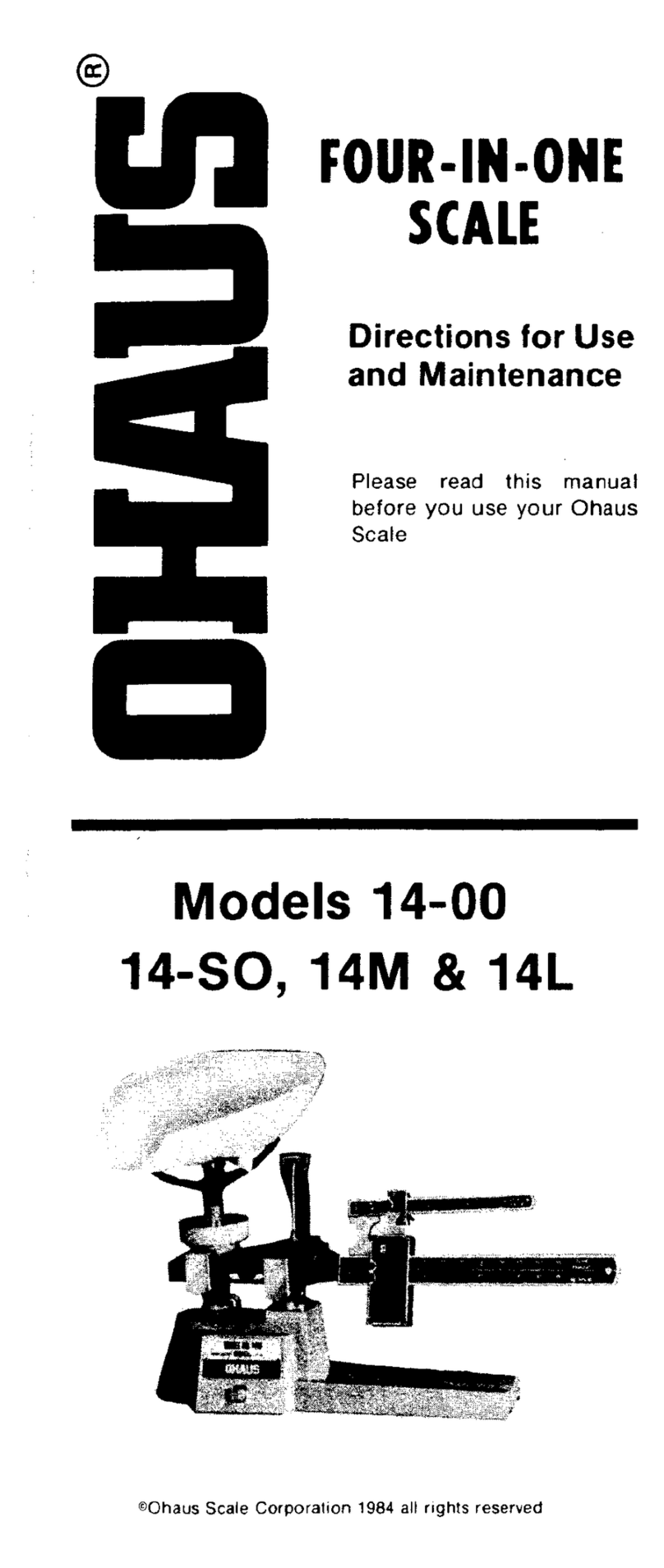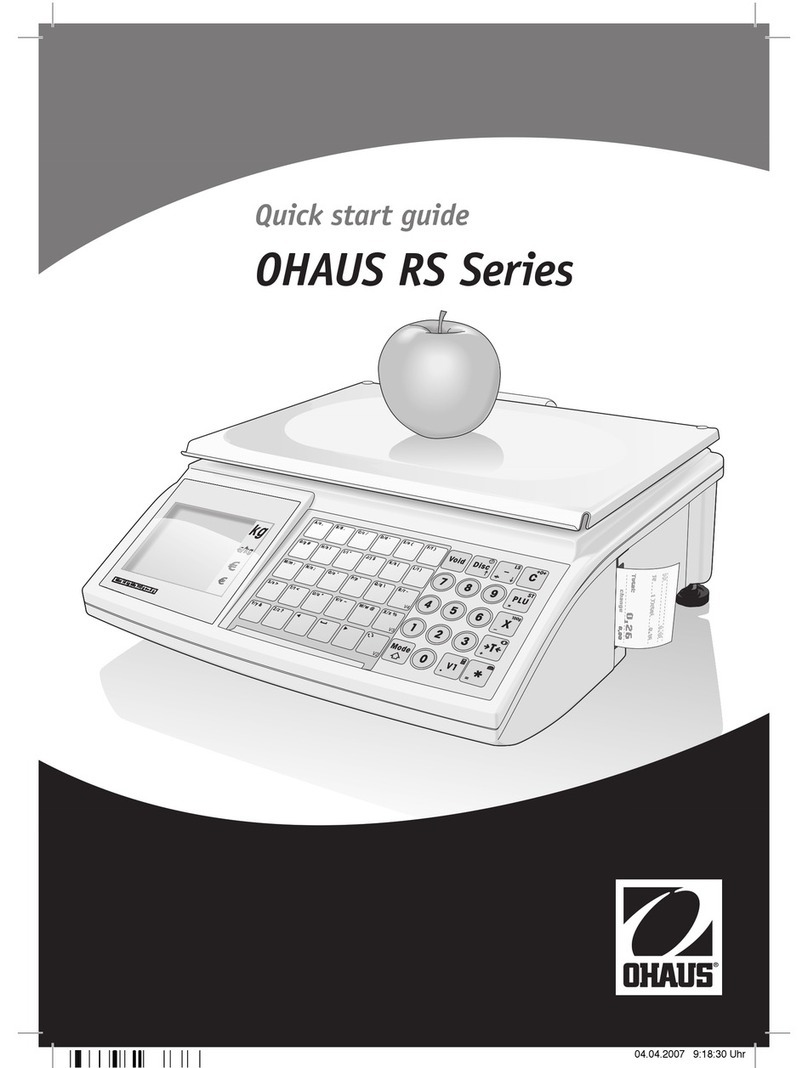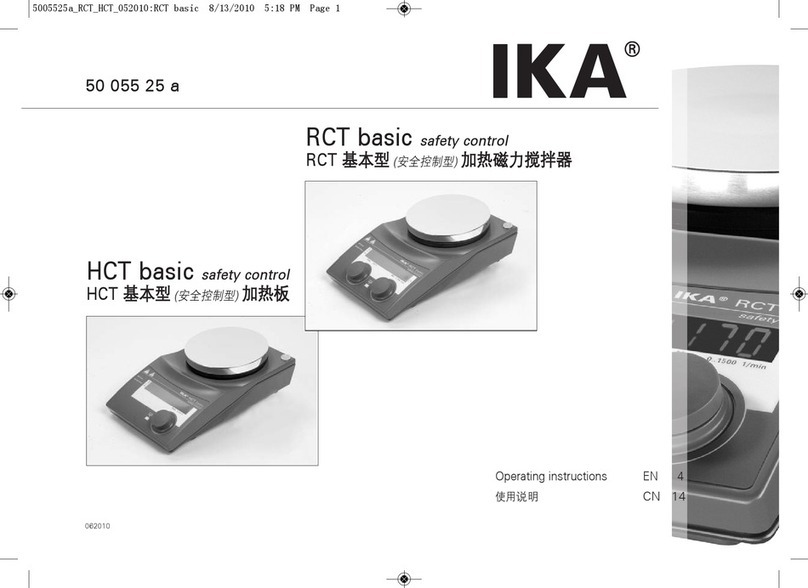EN-5 Carat / Gold
4.2 Calibration Menu [.CAL.]
InCal or Span calibration should be performed daily and when the room temperature changes.
InCal [InCal] calibrates the balance using an internal mass.
Span Calibration [SpaN]uses two weight values: zero and a weight between 50% and 100% of the capacity of
the balance.
Linearity calibration [LIN] uses three weight values zero, 50% of capacity and full capacity. Generally this
calibration is not required unless testing shows that the linearity error exceeds the Linearity tolerance in the
Specification table. (Not available in InCal models)
Calibration Adjust [CAL Adj] allows adjustment to the result of the internal calibration by +/- 99 divisions. (InCal
models only)
4.3 Setup Menu [.setup.]
Automatic Zero-Setting [azsmM] - Environmental changes can cause the display to drift. The Automatic Zero-Setting
Mechanism (AZSM) is designed to keep the balance set at zero, despite these slight changes. (OFF, SET .5d, SET
1d, SET 2d, SET 5d)
Filter [filter] - Use the low setting (SET LO) when environmental disturbances are not present. Use the medium
setting (SET MED) for normal environments. Usethe high setting (SET HI) when vibrations or air currents are present.
Auto Tare [A-tare] - The initial item placed on the balance is assumed to be a container so it is zeroed out. The
next item is then weighed. When the pan is cleared the balance resets, waiting for a container. (SET OFF, SET ON)
Grad [Grad] –Select the readability displayed. Reducing the readability may be needed for approval. (SET 1d, SET
[1]d, SET 10d)
Global Reset [Gbl rst] - Resets all settings to factory default values. (RESET)
4.4 Mode Menu [.mMode.]
Count Mode [Count] - [SET ON, SET OFF]
Average Piece Weight (APW) Optimization [aPwW.OPT] - (SET ON, SET OFF)
4.5 Unit Menu [.Unit.]
The Unit menu is used to enable or disable a specific unit. (SET ON, SET OFF) The unit is indicated by a small character
next to Unit in the display (g = grams). The default setting is Grams and Carat on and all other units off.
T-Units - When unit [t] displays; press Yes to show the T-Unit settings; SET OFF, SET TT (Taiwan Tael), SET TH (Hong
Kong Tael), SET TS (Singapore Tael), SET TO (Tola) or SET TI (Tical).
M-Units - When unit [m] is displayed, press Yes to show the M-Unit settings; SET OFF, SET MO (Momme) or SET
ME (Mesghal).
4.6 Print Menu [.Print.]
Output Stable [Out.Stab] - Data will only be sent when the Stable indicator is on. This setting works with manual
button pressing or continuous and interval Auto Print. (SET ON, SET OFF)
Auto Print [A.Print] - Data will be continuously sent when [Continu] is set. Interval [Inter] sends data every
1 to 3600 seconds. When Stable [Stable] will send data when the balance detects a new stable reading. This
can be a weight value only [LOad] or it can also include a stable zero [L+zero]. [OFF] disables automatic printing.
Content [CONteNt] - The content in the data transmission can be modified. Each of the following settings can be
set on or off. Number Only [numMber] will only send the numeric result. Balance ID [Bal. ID] will add the Balance
serial number for traceability purposes. Reference [refer] will add reference information relevant to the current
mode. GLP [GLP] will send additional items to allow proper documentation of laboratory results.
Line Format [LinE Fo] - Single line format [single] will put all the data in one line separating each output with
a comma (,). Multi line format [mMulti] will put each data output on a new line. Multi +4 [mM-4LF] will add 4
line spaces between each output.



















































